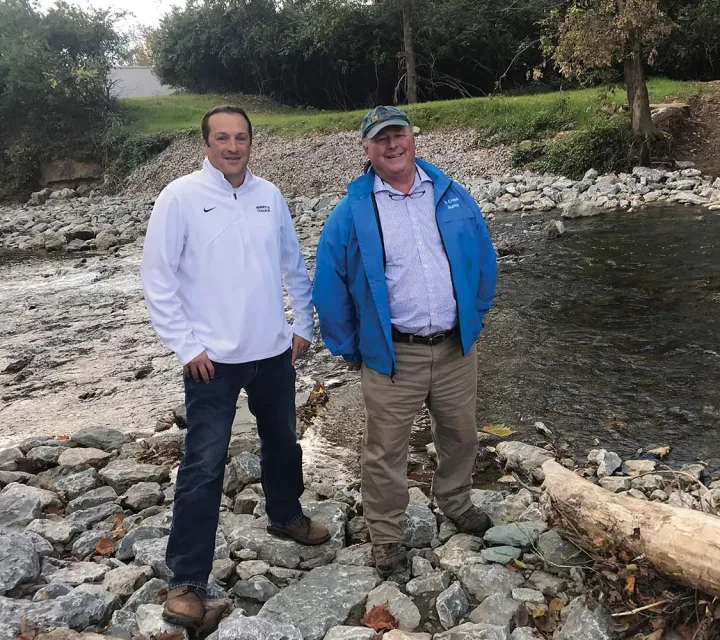Playing soccer along the banks of Mill Creek in Cincinnati as a child, it was common knowledge for Dave Schmitt ’84 and his teammates that if the ball flew over the fence and into the water, it was gone for good.
“You just didn’t go in Mill Creek — it was that polluted,” Schmitt says. “In 1997, American Rivers, the nation’s leading river conservation group, named it the ‘Most Endangered Urban River in North America,’ and it really deserved it at the time because it was in terrible, terrible shape. You could not have found a fish in the lower two-thirds of the creek at that point.”
In 2017, Schmitt changed careers from being an environmental attorney to heading the Mill Creek Alliance, a nonprofit organization established in 1994 that is committed to restoring the 28-mile-long watershed that runs from north of Cincinnati through 37 townships, cities and villages, to the Ohio River. It’s estimated that more than 450,000 people live in its watershed.
Earlier this year, Mill Creek Alliance was awarded a grant through the Clean Ohio Green Space Conservation Fund, which allowed the group to acquire conservation easements and begin restoration work in Evendale, a community along Mill Creek just north of Cincinnati. After putting out bids for an outside contractor, the organization went with Cardno, an ecological consulting and restoration firm that the organization has previously hired to help restore sections of the waterway. Already familiar with the quality work that Cardno provided, Schmitt was also excited about working with Joel Thrash ’02, a Senior Principal in Water Resources and Restoration Ecology at the firm. “This is a cooperative effort with the nonprofit, and city and local governments, and we work with all these different entities to try to make this watershed a more attractive place to live, work and play,” Thrash says.
Thrash, who lives near Cincinnati and leads Cardno’s Ohio operations, has an office that is close to where the restoration work was done and appreciates being able to work on projects that improve his community.
“It’s really fun working with Dave and his organization because these types of groups are really setting the table for the work that will get done five to 10 years down the road,” Thrash says. “They are doing hands-on clean-up projects, but they’re also assessing the damages and securing funding so (Cardno) can come in and help fix the damage that’s been done to these waterways in the past.”
Schmitt and Thrash, who realized their Marietta College connection only a couple years ago, are using their respective talents and leadership roles to help solve environmental and water resource challenges using green infrastructure and other ecologically informed solutions. Mill Creek Alliance and Cardno were also part of a broad coalition of stakeholders that recently completed the Lick Run Greenway Restoration Project – a $95 million capital improvement project by the city of Cincinnati that annually removes over 400 million gallons of polluted water from the Mill Creek and the Ohio River. It is the single largest green infrastructure and neighborhood revitalization investment that the city has completed to date as part of its ongoing effort to repair and replace its aging infrastructure with more sustainable solutions. The two alumni are well-positioned in their organizations to meet local demand for a global trend that is expected to see over $6 trillion of investments in watershed and ecosystem restoration over the next decade, as estimated by the United Nations.
Mill Creek has come a long way since Schmitt’s childhood, when its banks were superfund sites, local sewer systems drained untreated material in its waters and areas of the stream were channelized to control flooding.
“Sure, it’s taken 25 years but we’ve taken a stream that was literally, virtually lifeless and now we take people canoeing and kayaking on the stream,” Schmitt says. “We take people flyfishing. I was out with a group last weekend paddling, giving them a tour of the lower section of Mill Creek, and a bald eagle flew over our head. It’s recovered to that extent. You’ve got bald eagles and ospreys flying around and swooping down and catching fish. If you can do that in Mill Creek, you can do it in any stream in the country if people are willing to work at it and you get some help from government entities with funding.”
